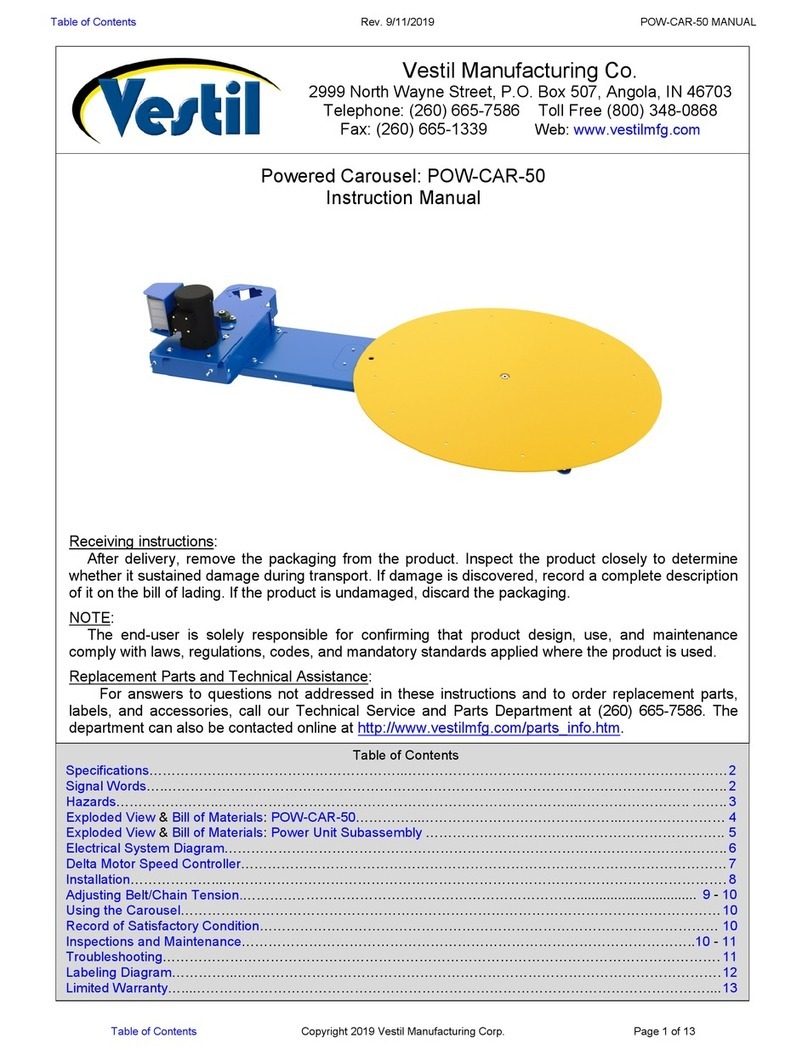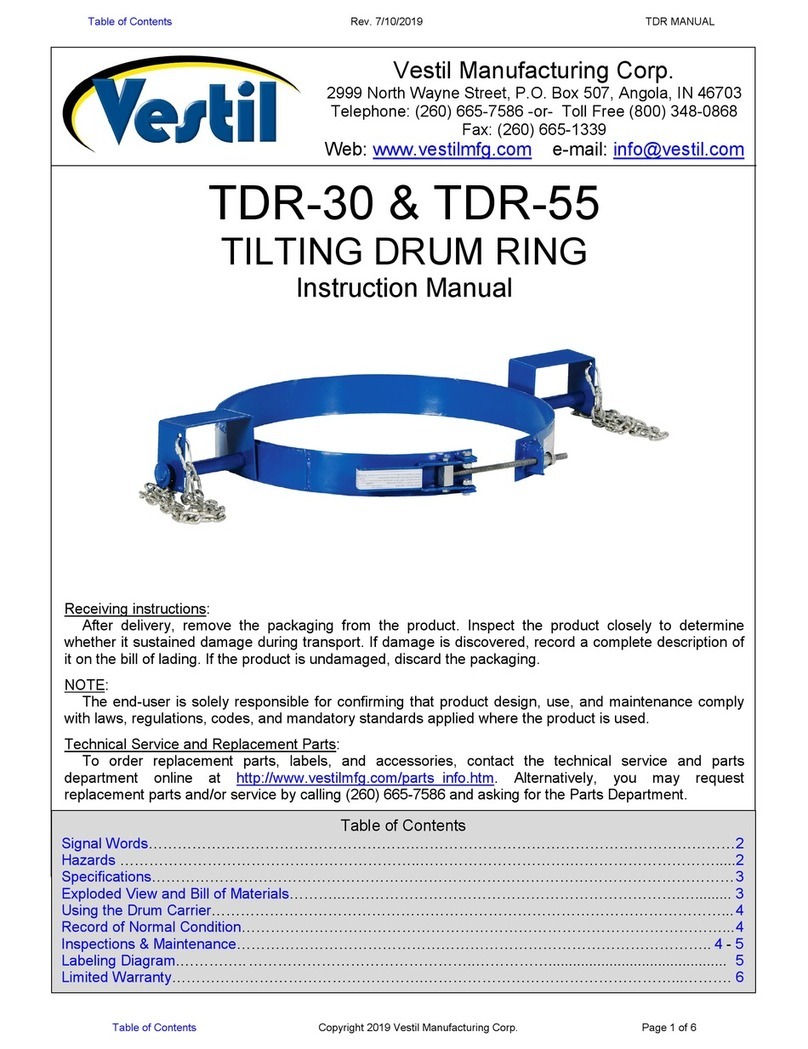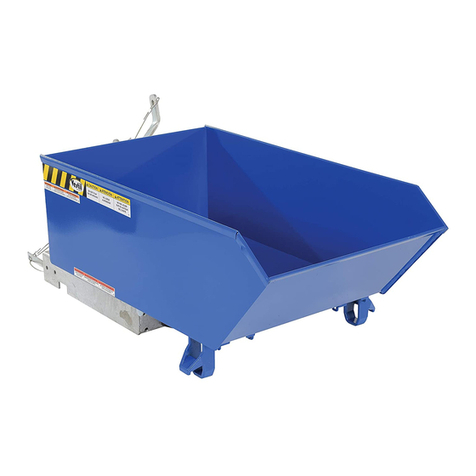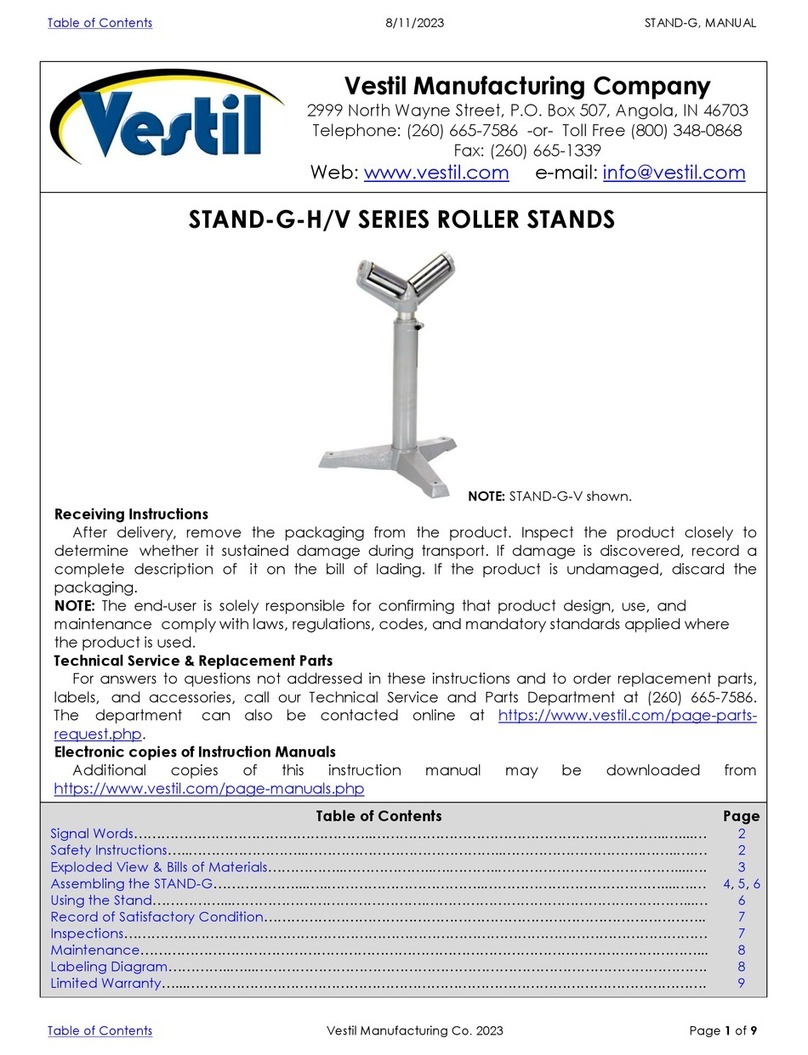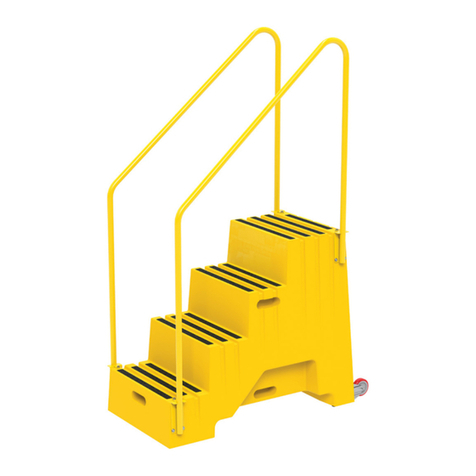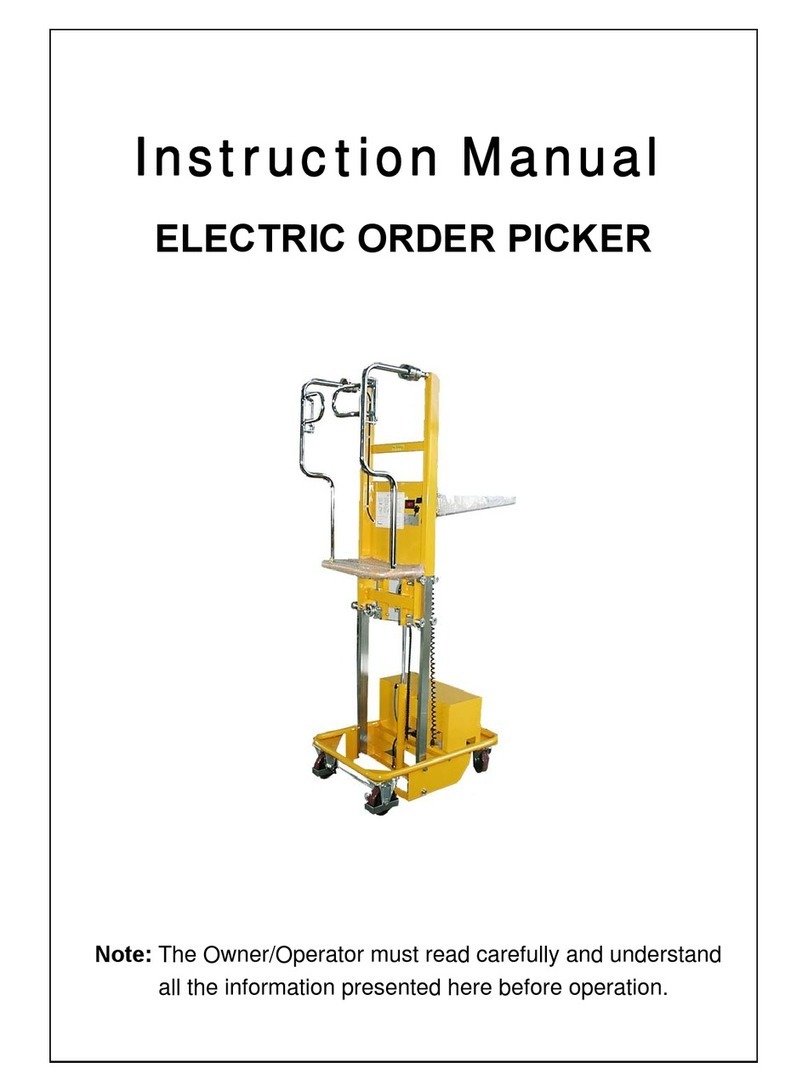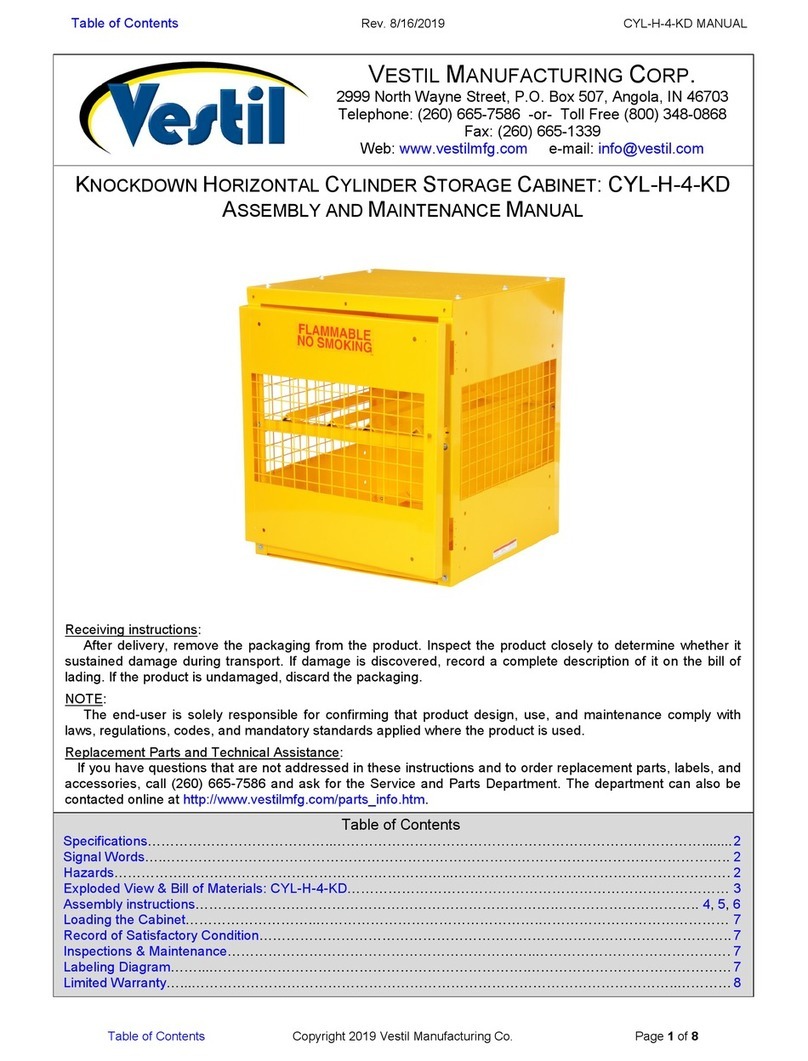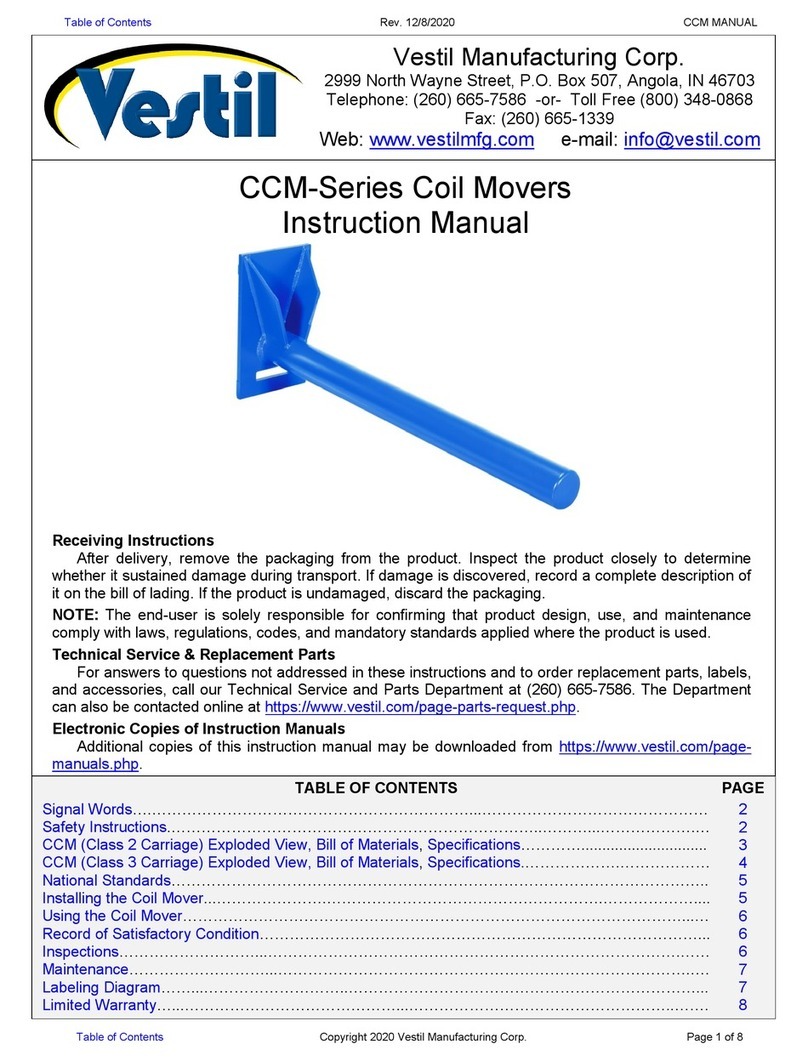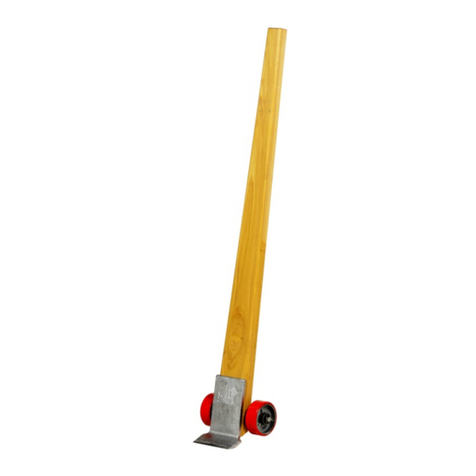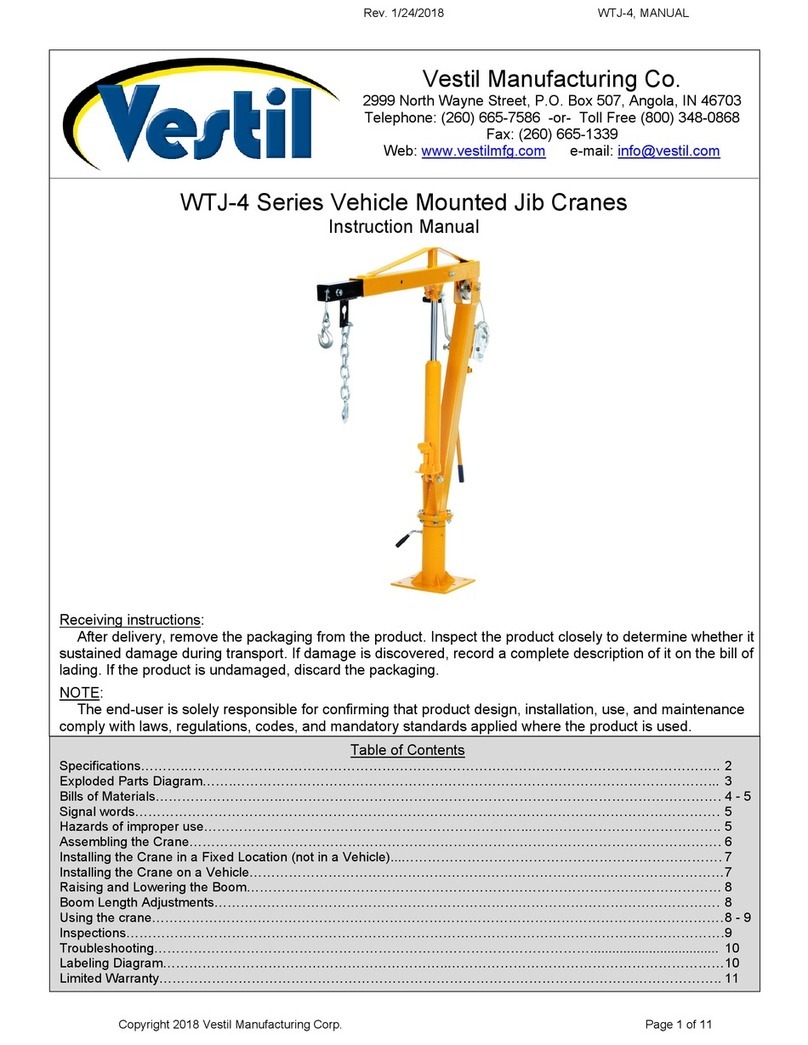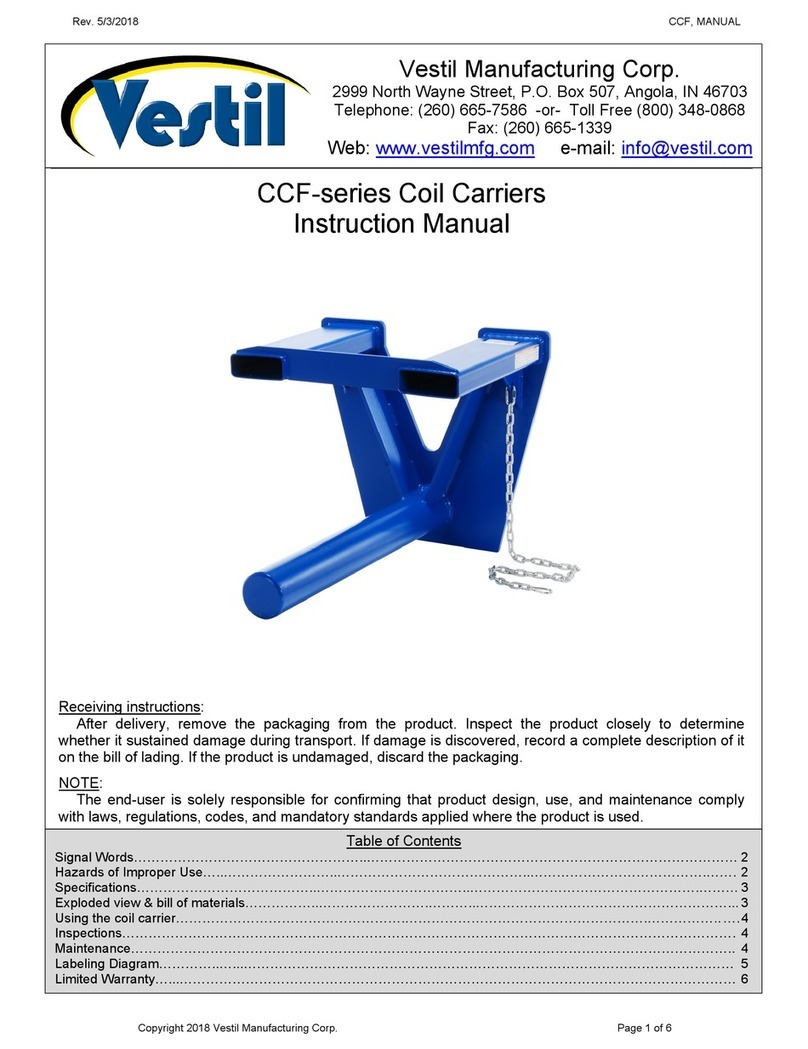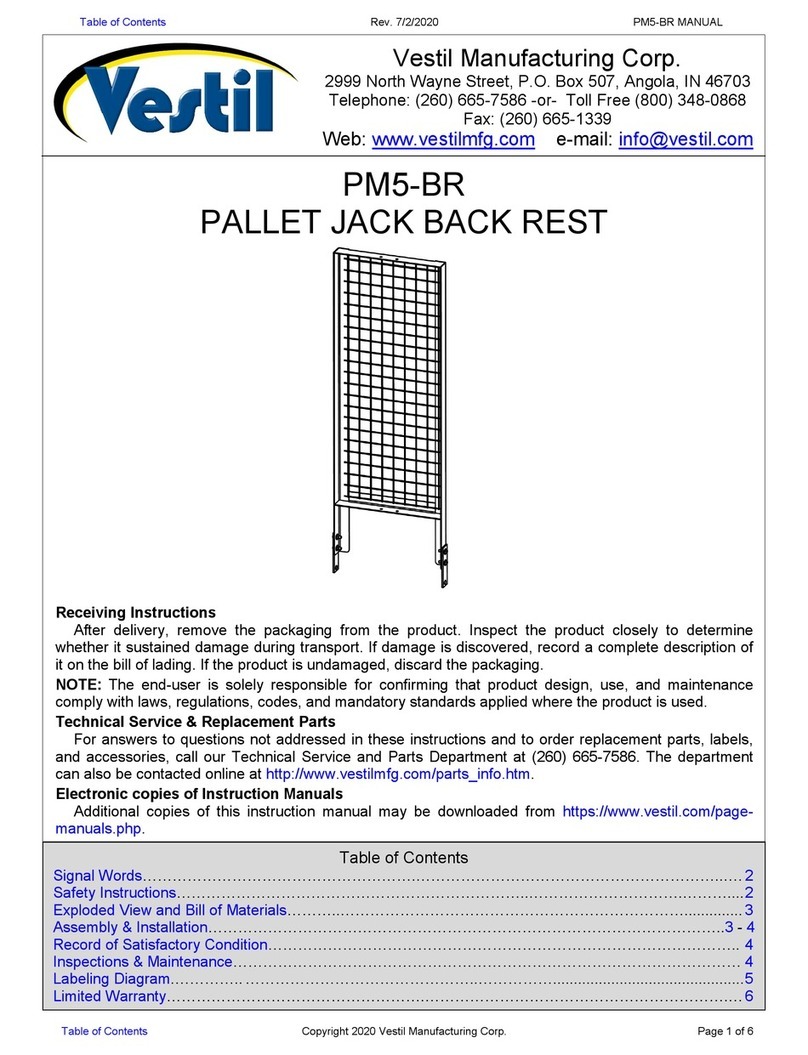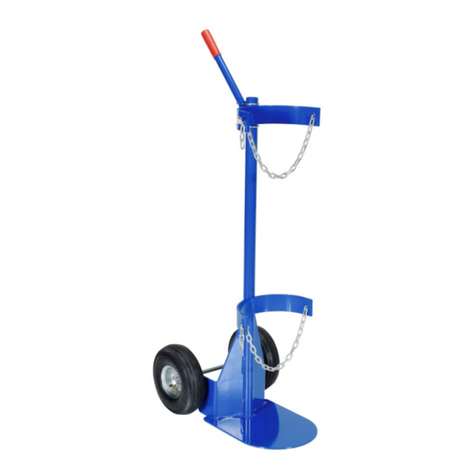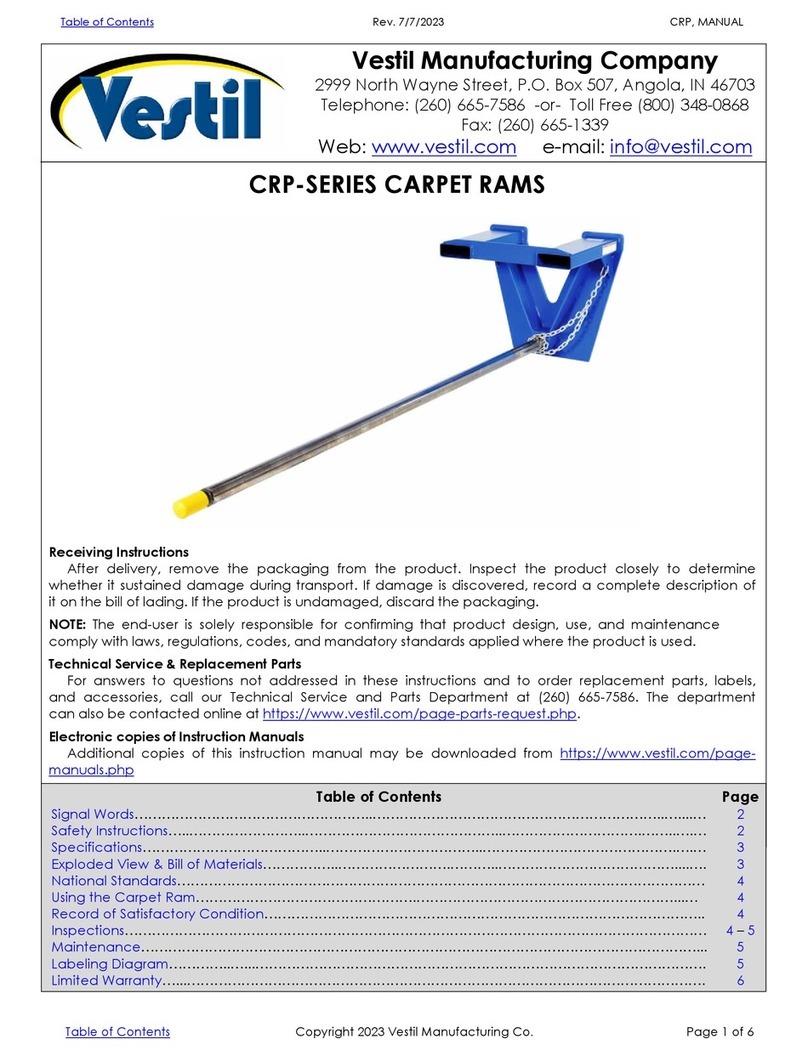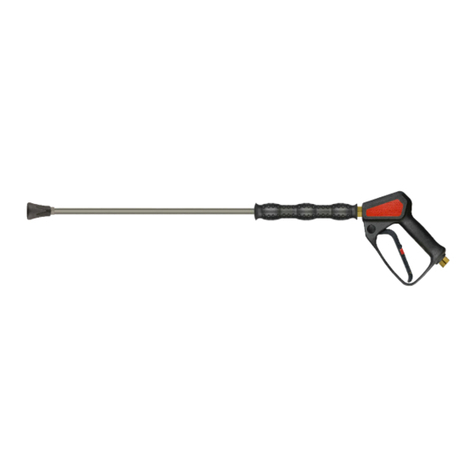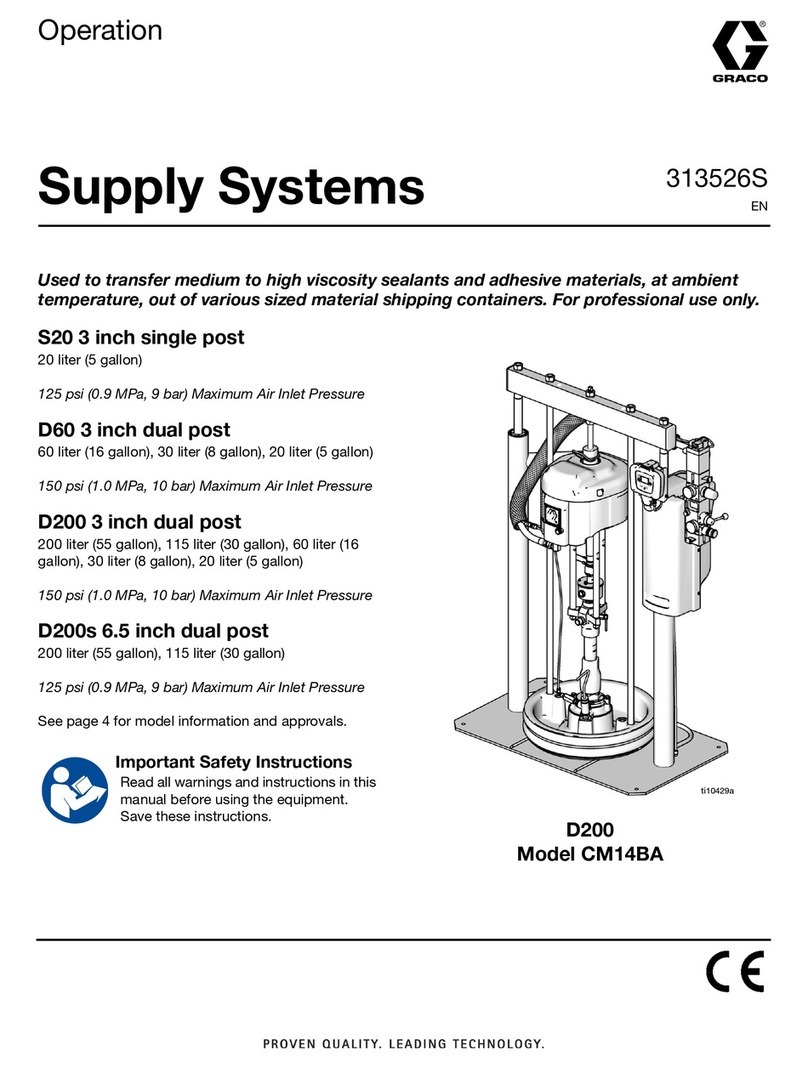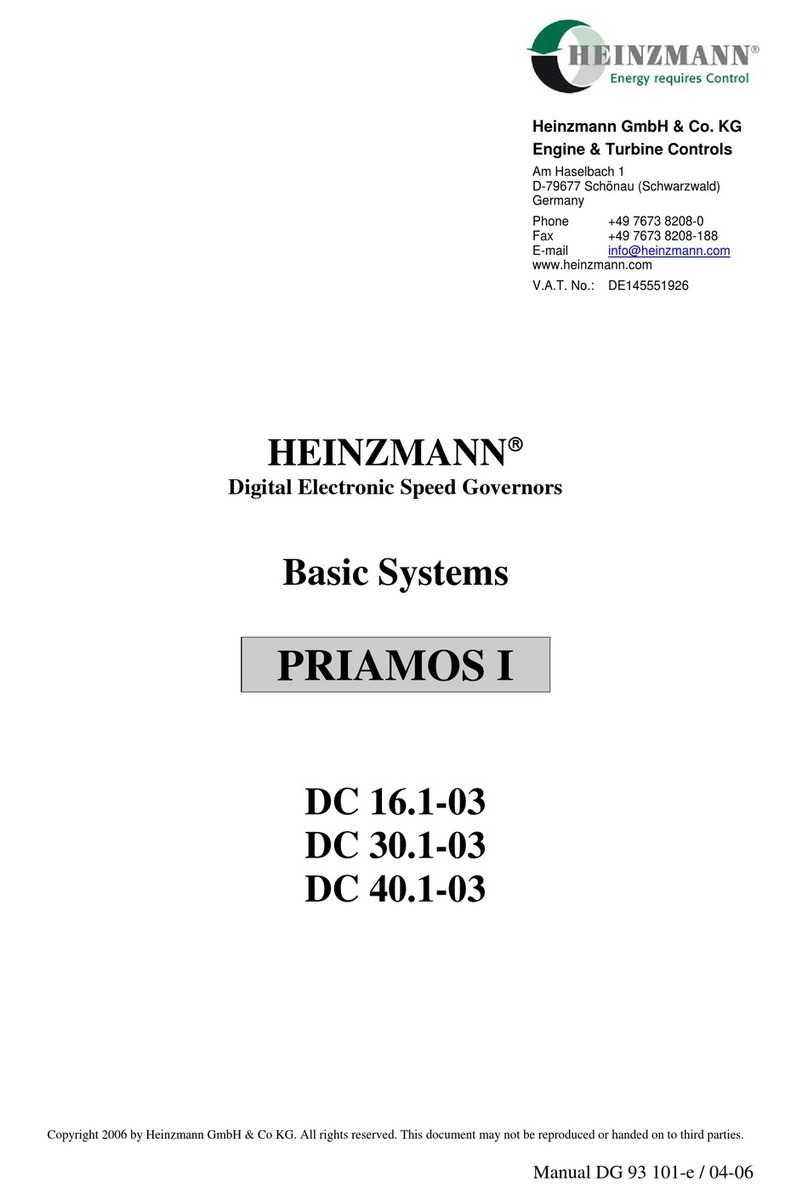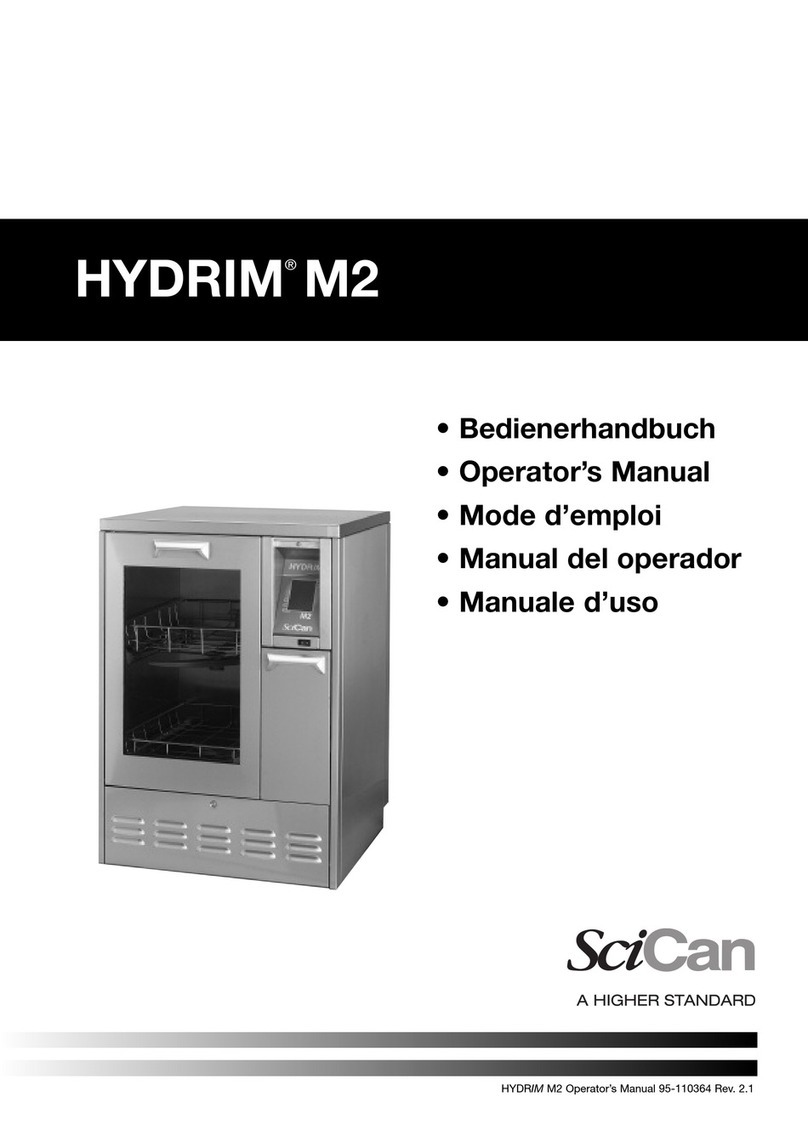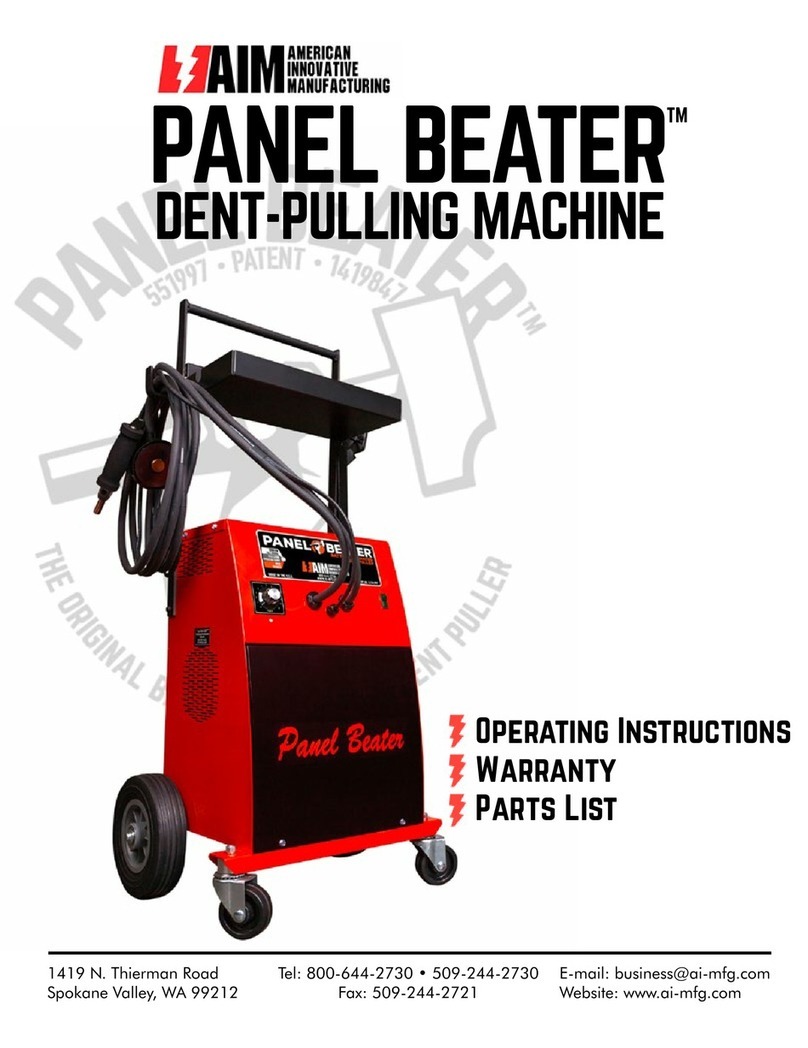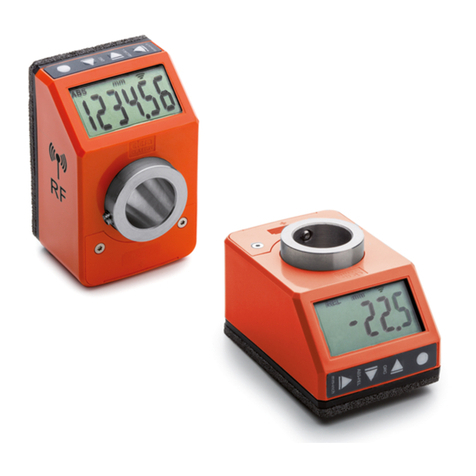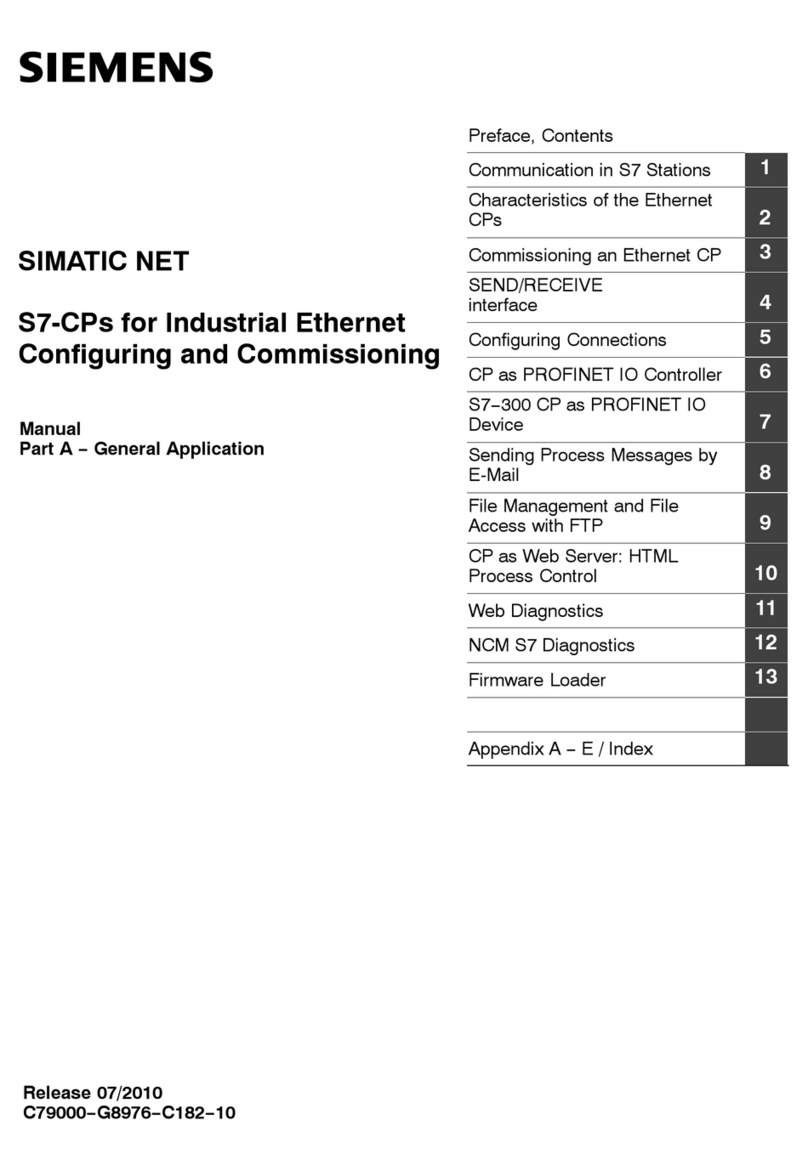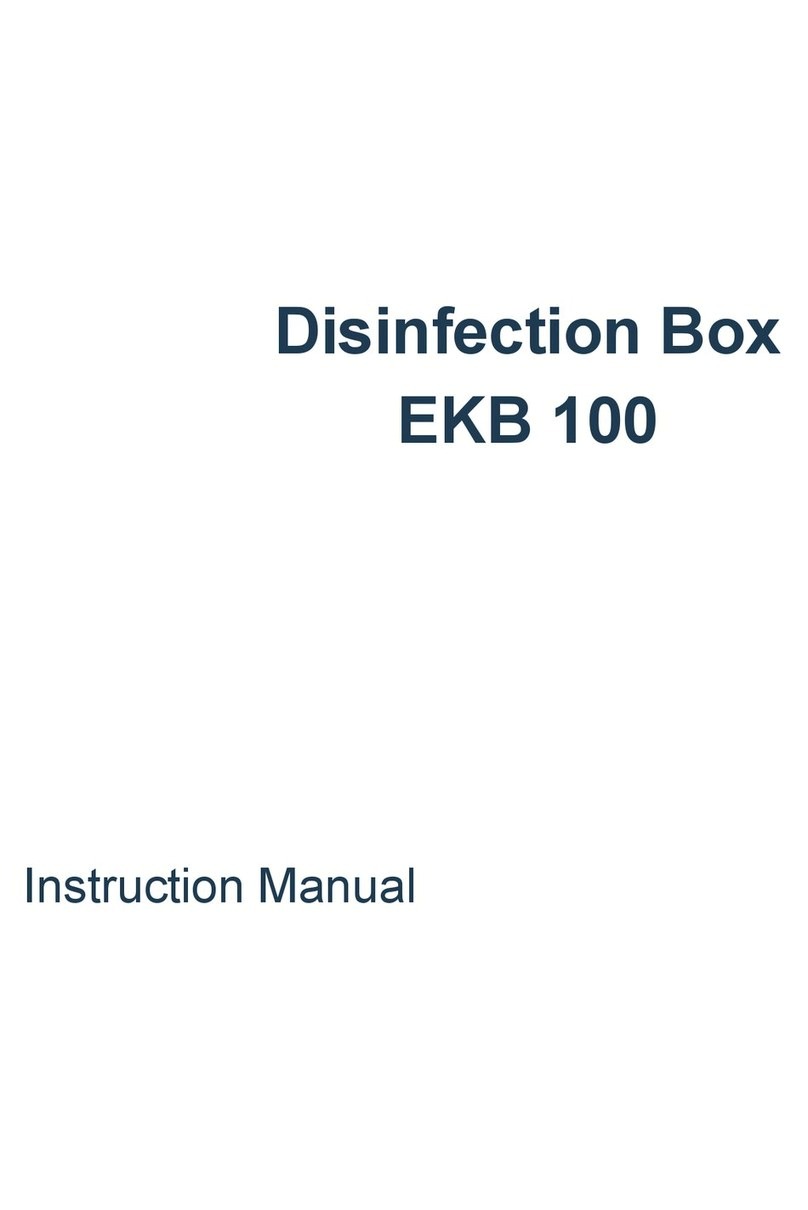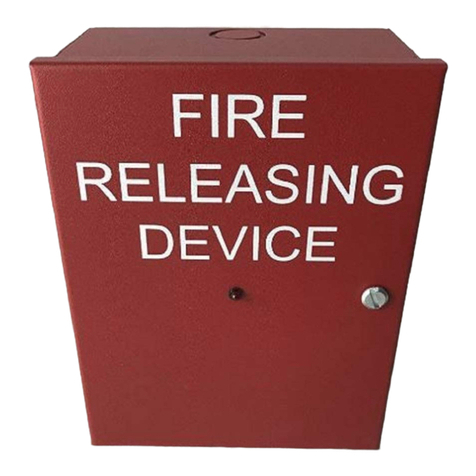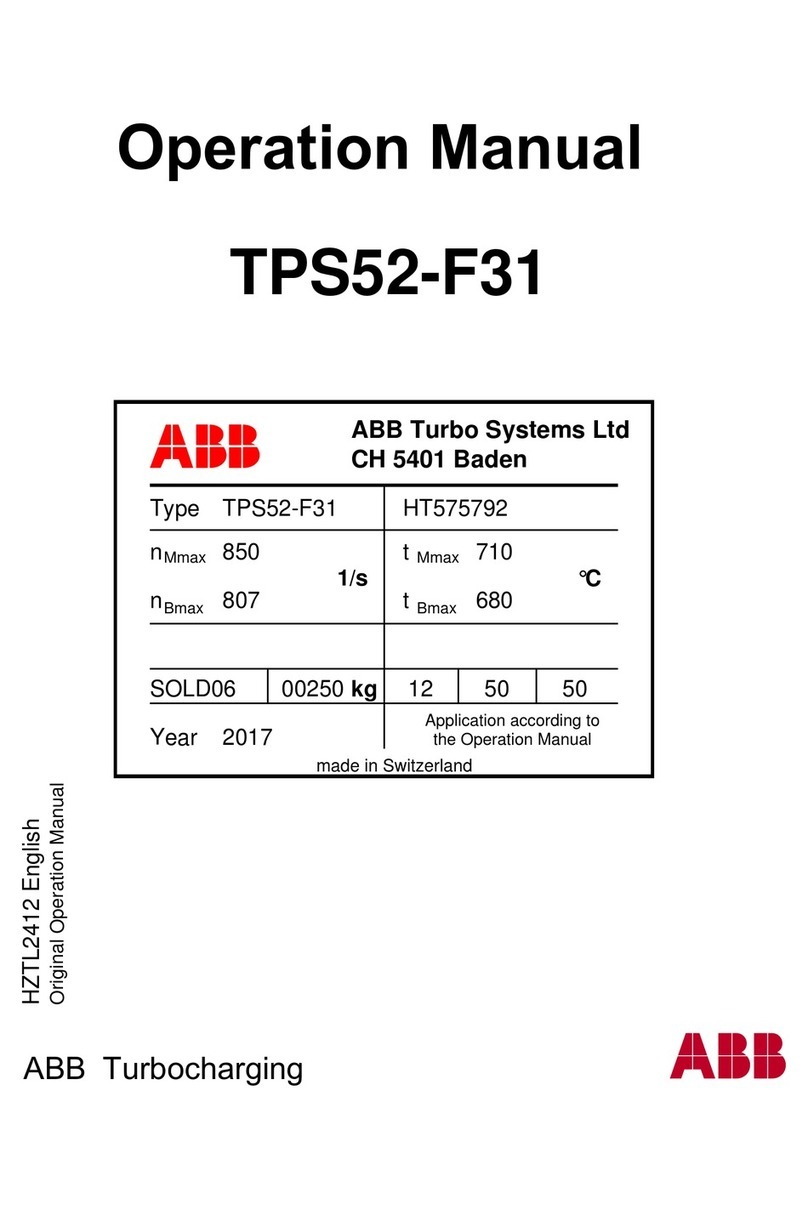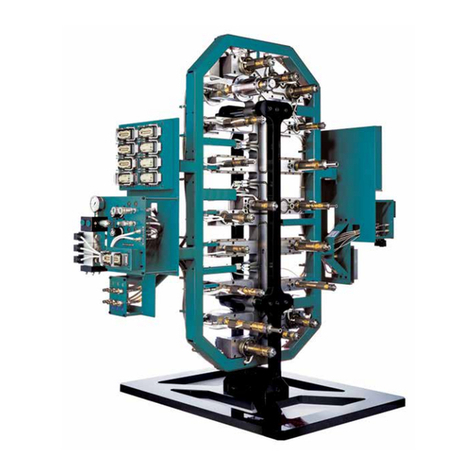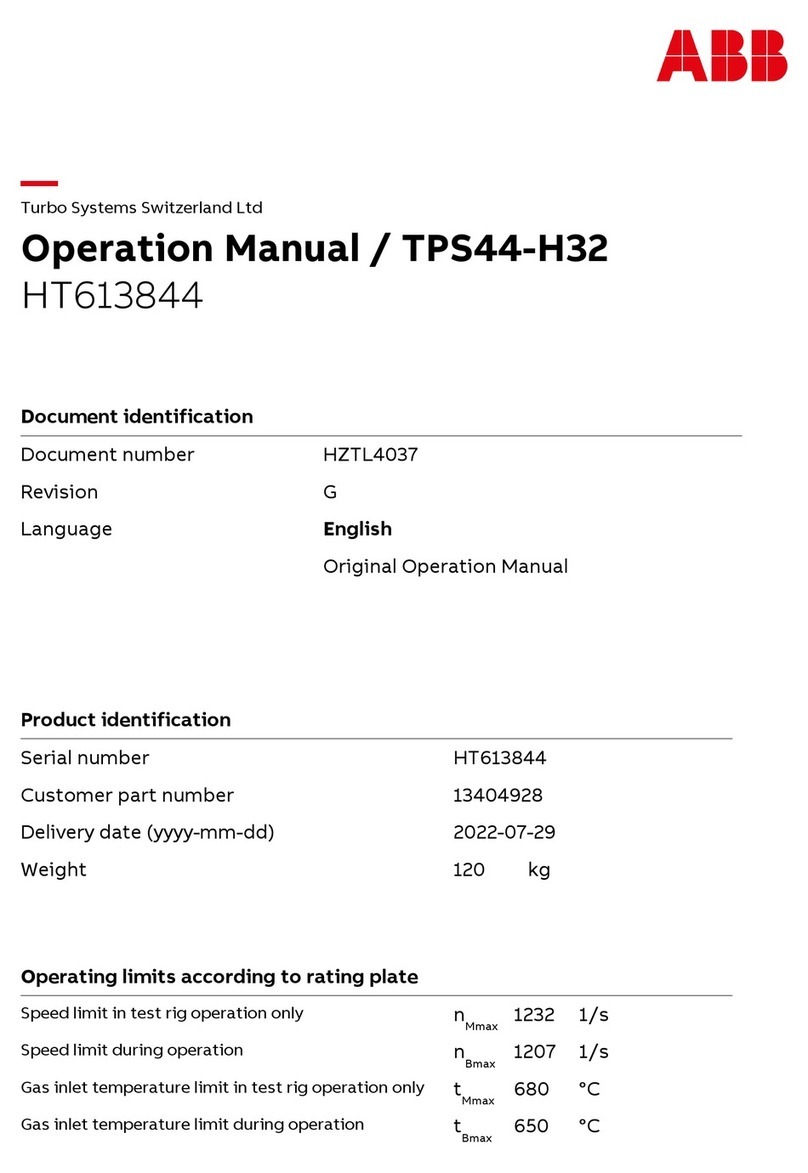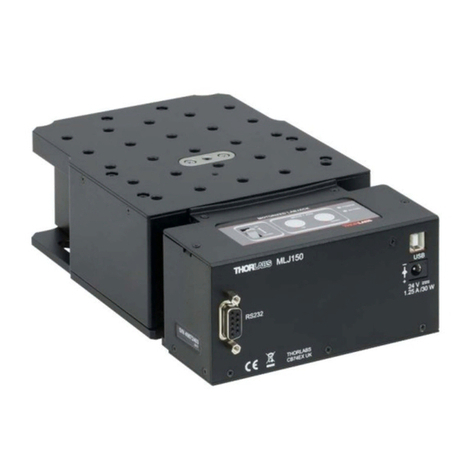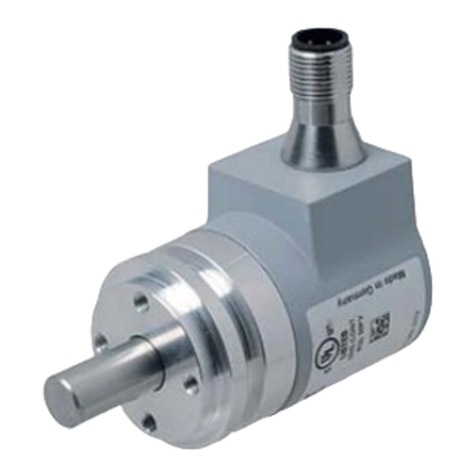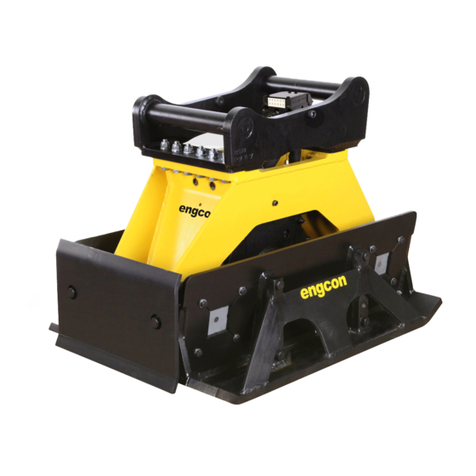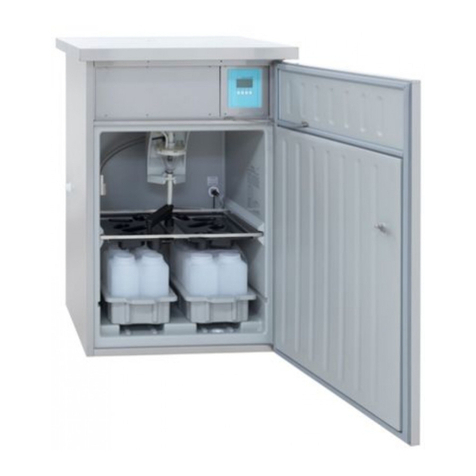
Table of Contents Rev. 3/17/2022 HOP-LP-N, MANUAL
Table of Contents Copyright 2021 Vestil Manufacturing Co. Page 8 of 10
dumpster. Continue to slowly lower the forks until the chute pivots onto the base frame. You should
hear the latch lever snap over the latch bar. Confirm that the chute is securely latched by raising
the forks. The chute should not rotate. If necessary, lower the forks completely and manually latch
the chute to the frame.
7. Lock the latch by reversing the process described in step 3. DO NOT move the hopper until the latch is
locked!
RECORD OF SATISFACTORY CONDITION (THE “RECORD”)
Before using this hopper for the first time, create a record of its appearance and features. Include
descriptions of the chute, handle, base, carriage chain and quick link, pivot points and pivot point
hardware, and the chute release mechanism. Release the chute. Describe how the unit looks and sounds
as the chute rotates. Also describe the force necessary to release the chute by hand using both the
manual release lever and the release cable. Secure the chute to the base and describe how the latch
mechanism works. Thoroughly photograph the unit including all labels. Collate all writings and photographs
into a single file. This file is a record of the unit in satisfactory condition. Compare the results of all inspections
to this RECORD to determine if the unit is in satisfactory condition. Restore the hopper to satisfactory
condition BEFORE using it again.Purely cosmetic changes, like damaged surface finish (paint or
powdercoat) are not changes from satisfactory condition. However, touchup paint should be applied as
soon as damage occurs to prevent rusting.
INSPECTIONS & MAINTENANCE
Inspections and repairs should only be performed by qualified persons. Compare the results of each
inspection to the RECORD OF SATISFACTORY CONDITION (the “RECORD”). Do not use the hopper unless all
parts are in satisfactory condition. Replace parts that are not in satisfactory condition before using the
hopper again. DON’T GUESS! If you have any questions about the condition of your hopper, speak with
TECHNICAL SERVICE personnel.The phone number is provided on the cover page of this manual. Never
make temporary repairs of damaged or missing parts. Only use manufacturer-approved replacement
parts.
Inspections [refer to EXPLODED VIEW on p. 4]:
(A) Before each use inspect the following components:
1.) Release cable – Look for fraying, birdcaging, thinning.
2.) Hopper chute or base frame – Check for damage, deformation, corrosion or severely rusted regions.
3.) Pivot points – As the chute rotates (after releasing it), listen for unusual noise and watch for binding as
the chute rotates. Also look for distortion of the axle pins or axle receivers.
4.) Release & Latch mechanism – Test the chute release mechanism (“lock release, lever assembly”). The
torsion spring should cause the lever assembly to automatically recoil and latch the chute to the
frame.
5.) Safety chain – Check the chain for damaged links (broken, cracked, elongated).
(B) Inspect the following components at least once per month:
1.) Pivot points – Look for excessive wear, warping, or other damage to the release lever pin, pin
brackets, axle pins, and axle receivers. Listen for unusual noises and watch for irregular movement.
Remove dirt and debris from areas that could affect the hopper’s dumping motion.
2.) Fasteners (bolts, nuts, axle pins, cotter pins, retaining rings) – Inspect for looseness and wear.
3.) Casters – Check for looseness, excessive wear, or damage to the casters, caster bearings, mounting
brackets, and hardware. Confirm that the brake functions properly.
4.) Release mechanism – Verify that the mechanisms function properly: 1) torsion spring firmly latches the
lock release lever assembly (“lever assembly”) to the chute; 2) the latch lock bracket should seat on
the latch bar unless manually disengaged (see Diagram 1 on p. 7); 3) lever assembly pivots smoothly
and securely engages the latch bar.
5.) Chute – Examine the chute. The structure should be rigid and square without corroded holes or
severely rusted areas.
6.) Supporting frame – Examine the frame. It should be rigid and square, welds should be intact, and fork
pockets should be square and sound.
7.) Labels – All labels must be in the locations shown in the LABELING DIAGRAM on p. 9.
Maintenance:
Implement a maintenance program to ensure that the product functions properly.










